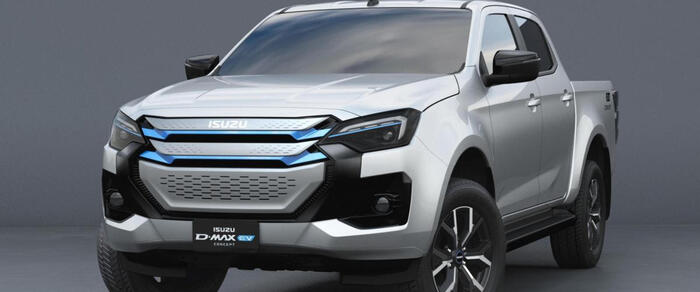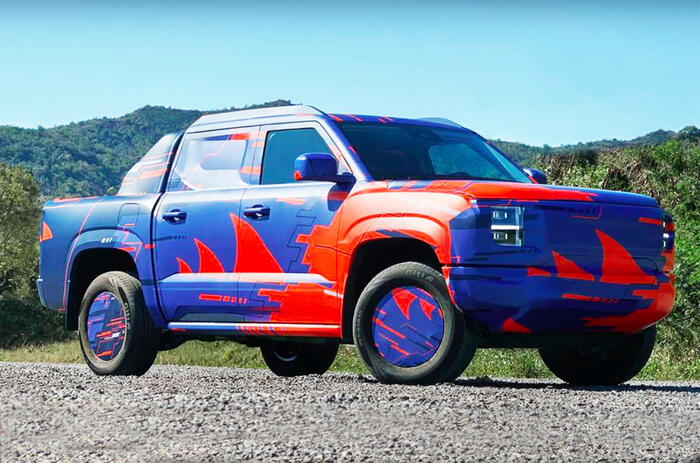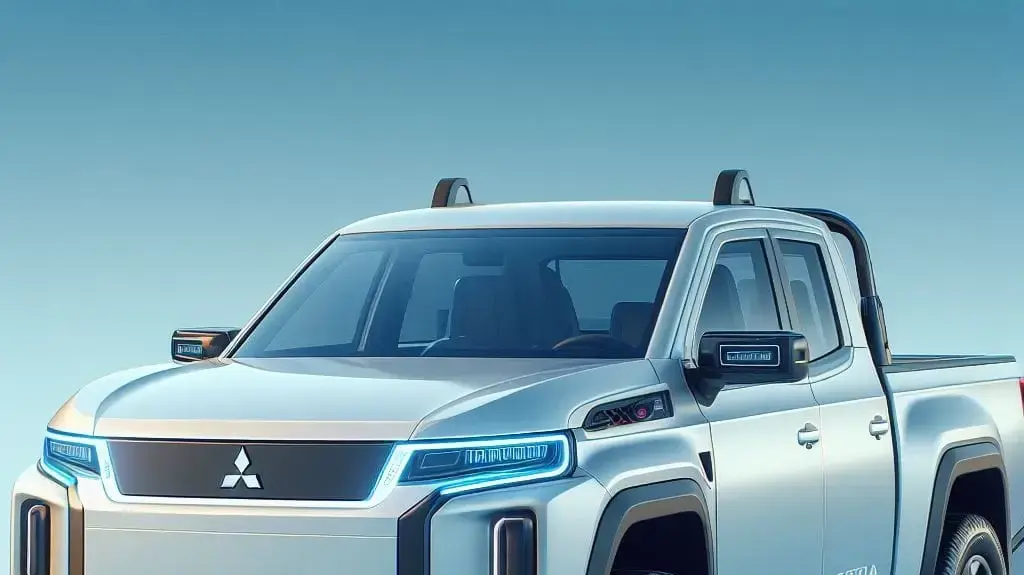A new generation of Isuzu's successful pickup truck, more comfort, more safety
Gone are the days when a pickup truck had to be just a tough tool.
Freelancers who still choose the light van as their day-to-day solution are now expecting more.
The prices of these are now high and the consumption of recreational vehicles is growing.
A modern pickup truck should let its owner enjoy all the worlds.
Be gnarled on the outside and pleasant on the inside.
These two opposing demands are not simple for anyone, everyone will say that.
And if there’s one maker that this job is supposed to be twice as hard for, it’s Isuzu.
More from Overdrive >>>
These things are said because of the focus of Japanese society.
Unlike other competitors in the category, it is aimed at only one place.
Work vehicles and trucks.
It does not have an impressive range like Toyota has for example, from which it can mix knowledge and experience into such a pickup.
In fact, the D-Max is the smallest vehicle Isuzu produces today.
Hence, it only has vehicles with much more tons, much more wheels and less refinement.
Perhaps for this reason, the D-Max has taken on a positive name in the local van market.
With sales control in this field for the past 16 years.
Good good name from good oil?
Maybe, but even with such a name, after 8 years of service, it's time for the Max to resume.
And if not because of age, then because of the competition, the stubbornness, the news and the improved it has.
And that's what we have here, a new generation of familiar vans.
A generation that promises a significant leap forward, on paper at least, with only the paddle unit remaining from the previous generation.
But we are ahead of the latter.
Shows eyes
The exterior change is noticeable, and is even more noticeable with the bright color of the test vehicle.
The screaming orange combined with the dark hoops of the premium version of LSE being tested, left no one indifferent.
Neither do we.
These are not just the new and smart lighting units up front, it is mainly the wide nose, which the power lines on the engine compartment, emphasize it more.
The designed chassis is larger, with improved door developers and Isuzu claims it is also more sturdy.
As for the ladder chassis itself, they already use numbers.
It is not only wider than the previous one, the longitudinal beams themselves are thicker and there are 8 wide beams here - more than is customary in the field.
The torsional resistance increased by 20 percent and the longitudinal stiffness by 26 percent.
Among the body dimensions that have emerged, including the rear box and ventral spacing, Isuzu tells of new tip bone suspensions at the front, a rear axle with three leaves on each side, enlarged brakes, an electric steering wheel and more.
But what feels new, and certainly constitutes a leap forward, is precisely the cabin.
The feel in the cabin is spacious, the new seats have grown in size and they offer good comfort.
The materials, assembly and feel are clearly different from the previous D-Max.
A combination of soft surfaces, quality upholstery and also the large multimedia screen, make this cabin feel cozy and modern.
You can find a lot of storage compartments, climate control, charging sockets, etc. here.
But the main thing here is the overall impression - designed, meticulous, elegant.
The equipment list is very respectable and varies between the different versions, but all versions of the D-Max, include advanced safety equipment and boast a five-star rating in the European crash test.
The list includes an additional airbag between the driver and passenger, frontal collision alert, autonomous emergency braking that detects pedestrians and two-wheelers, lane departure warning and correction, driver fatigue detection, automatic high beams, adaptive cruise control, lane center maintenance (in automatic models) and more. .
The tested version also adds a warning about vehicles in dead space, preventing collisions with vehicles while changing lanes, front and rear sensors with a reversing camera, warning of cross-rear traffic, airbags for the driver's knees and more.
It does not end there
It really does not end there.
The list of comfort equipment is both long and surprising.
Climate control from here and rear air vents, leather upholstery and electric seat adjustment, large multimedia screen, everything feels very "private" excuse us for the archaic expression.
The driving position is quite good, the steering wheel is adjustable (we would have been happy for a bit more height) and after propulsion, even the diesel gurgle sounds distant and dull.
Departing reveals that indeed the insulation in the cabin has been improved, there are wind, road and engine noises on the cruise, but they are whispered compared to the previous generation.
And also in relation to what is acceptable in the segment.
The ride comfort is also good, despite clear differences in ability between the absorption of the front suspensions and the excessive restraint of those at the rear.
The overall result is pleasant and very easy to operate.
The multimedia system requires easy adaptation, but after a period of time it makes sense.
The audio system gets two more speakers in the ceiling here further enhances the feel here.
The paddle unit does the job, without exciting.
The familiar turbo-diesel has undergone a general refinement and has retained the same data in a big way.
The gearbox has also been improved and offers a quick and smooth transition between gears.
In manual operation the response is slower, and along with the clear pedal suspension of the engine the responses are not immediate.
Too bad.
The overall performance is good, but as with other vans, here too it takes quite a while until the pedal press is translated into actual acceleration.
The image is completed by the new braking system that showed good power and linear pedal action than before.
And if we touched the brakes - in the ABS area a little early to get into action and in doing so increases the braking range on a slippery substrate at low speed.
The new D-Max enters the field with improved body angles and slightly increased ventral spacing.
These are supposed to keep the handsome bumpers away from encountering an occasional rock.
The ventral arrangement here is good properly and there is also a rear lock as a safety net.
The transition to dual propulsion occurs quickly and smoothly through the switch and it is possible to set off.
The improved absorbency is noticeable on the trail.
The D-Max definitely keeps its passengers relatively peaceful.
In more technical sections we were happy with the ability to lock the rear differential and needed it in a number of cases.
The ability of the propulsion system to produce a pull is certainly good - but there is a feeling that the articulation of the chassis, limits the ability of the D-Max, to send a wheel to the ground at occasional crossings.
As mentioned with power transmission ready for action and rear lock, there is no problem overcoming these either.
The power transmission also produces a slow and consistent crawl downhill, properly.
At the end of the strenuous test drive, the D-Max recorded an average fuel consumption of 10.3 km per liter.
More tolerable for such a vehicle in this type of travel.
A matter of view
The tested version of the D-Max is not one of those that make it a bestseller.
Most of the sales of this series go to institutional customers.
These will usually be selected in the simplest versions, sometimes with a single cab, rear-wheel drive and even a manual transmission.
These cheap options, along with a good reputation in the market, high treatment intervals and a comprehensive five-year warranty, will keep the place of the D-Max in the sales charts.
Only now, all drivers in the new generation, will enjoy improved comfort and comprehensive safety equipment.
As for this version, it will fight head to head against the most equipped and most expensive Hilux for the hearts of those who still want a pickup, with a lot of off-road capability and a little more pampering on the road.
The D-Max will come to this comparison with a significantly lower price than the more powerful Hilux.
The capacity in both cases is high both on the road and beyond.
So with these two options the battle on the ground is expected to be hotter than ever.
Isuzu D-Max
LSE
'Premium'
Engine: Turbo-diesel,
1,898 cc
Power:
163 hp at 3,600 rpm
Torque:
36.7 at 2,000 rpm
Gear:
Automatic, 6'h '
Motivation:
Double not fixed
Acceleration from 0 to 100 km / h (approximate):
12 h
Maximum speed:
180 km / h
Fuel consumption (test):
10.3 km / l
Wheelbase:
312 cm
Weight:
2,020 kg
Price (tested version):
NIS 266,990
Pros:
Comprehensive and comprehensive improvement
Cons: It's
always nice to have more power
Bottom line:
will continue to lead









